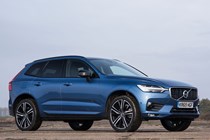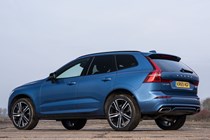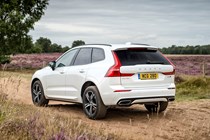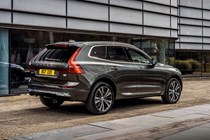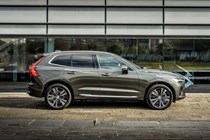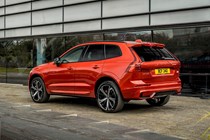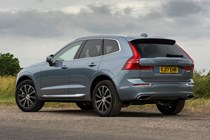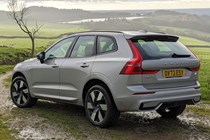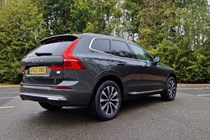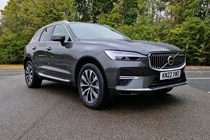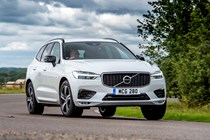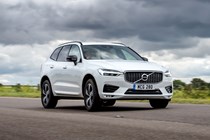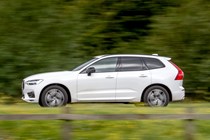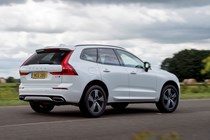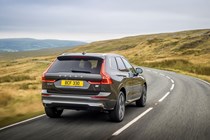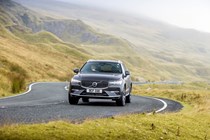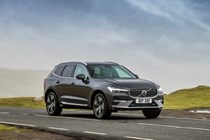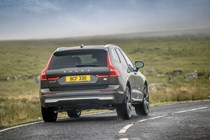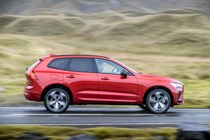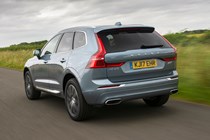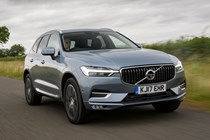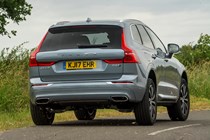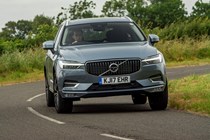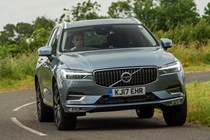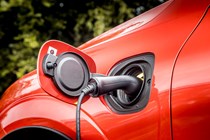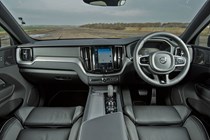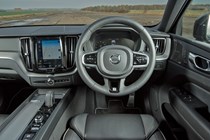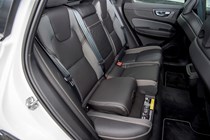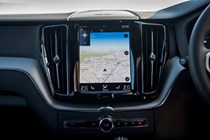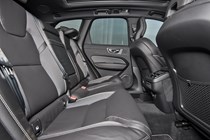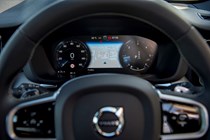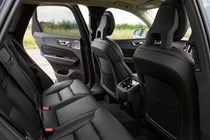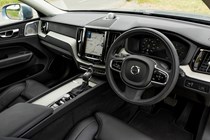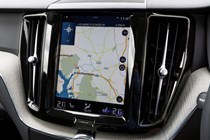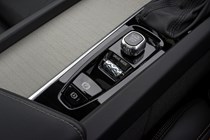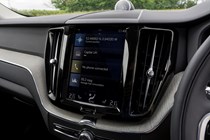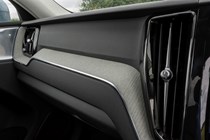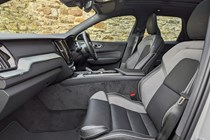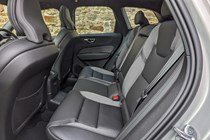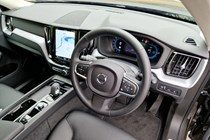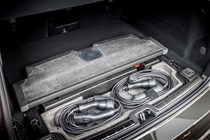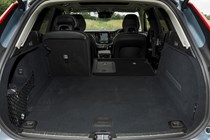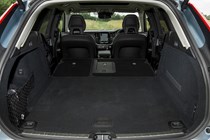
Volvo XC60 long-term test
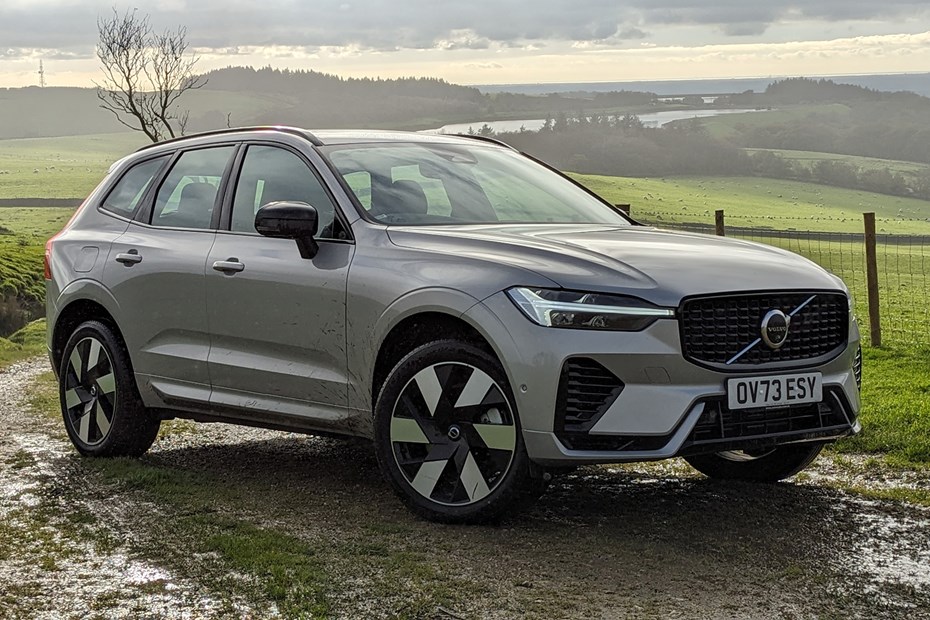
Update 1: Welcome

Parkers tries out Volvo’s new subscription-based car ownership service, called Care by Volvo, which comes with everything you need for one monthly fee. Petrol not included.
Buying a car is a weird and illogical process from start to finish. I appreciate this might sound a bit off-brand from a car buying and reviews website, but it’s true.
Why is this the case? Well it’s the second most expensive purchase you’ll make (unless you own a yacht or helicopter) and so by that very nature car-buying isn’t as simple as an impulse-purchase of a bacon roll on your way to work in the morning, but does that really mean it needs to be as complicated as it is? Haggling, picking options based on their resale value, or just having to pay a different amount for the same car depending where in the country you live – buying a car can be an intimidating process.
Most of us rely on cars to enable our work and personal lives, but few people can afford to buy them outright. That means (as with a house purchase) there needs to be some sort of financial manoeuvring to balance the equation – either you buy a car and then sell it a few years later before depreciation has taken its toll or get one on a three-year PCP. Which largely equates to the same thing.
Then there’s ownership itself, something that makes even less sense when you think about it – consider the amount of time this very expensive item sits on your driveway doing nothing. For years on end. What if you only want a car for a couple of months of the year? What if you buy a car and then decide you don’t like it?
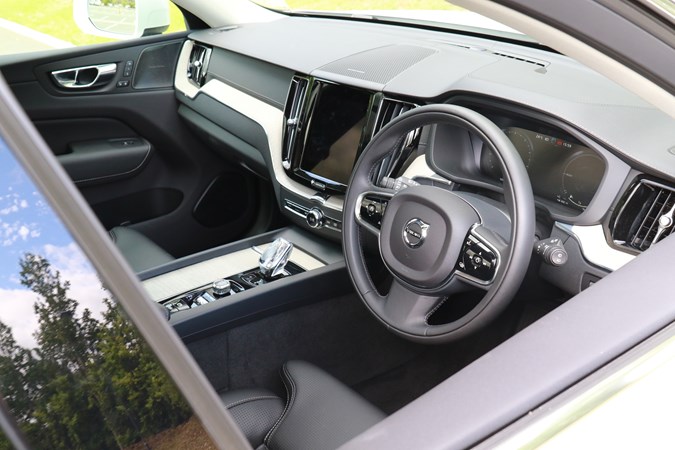
Click and collect
A growing number of manufacturers are offering a subscription service for their cars, which (on paper at least) appears to solve all of these problems. You don’t pay thousands of pounds for every film and TV series ever made on DVD and then have them all turn up in a big truck one day, you pay Netflix every month and dip in and out when it suits you.
Care by Volvo works on the same theory, offering a flexible way to use a car with most of the running costs included in one monthly fee, so you can easily budget without worrying about an unexpected bill. If you sign up today you can have a car from stock within a month or build one to your spec for delivery in three to
eight months. There’s a 30-day trial, after which you have to give three months’ notice if you want to swap cars or walk away. Not as easy as cancelling Amazon Prime but not far off.
Given the rapidly changing nature of cars (particularly when it comes to propulsion) this ownership model makes perfect sense if you want to try something out without having to commit to it for three years. Not sure if an EV is for you? Swap it for another model. Does a PHEV offer enough electric range for your commute? Try one out for a bit to find out.
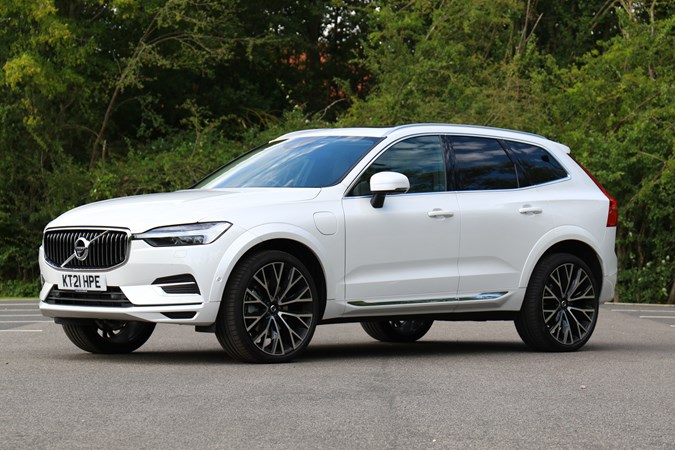
How much does it cost?
In terms of cost, an XC60 like our white long termer would be £879 a month – about £100 more than the monthly repayments on a similarly specced model bought with PCP finance. That’s not much more when you consider the Care by Volvo car includes all your servicing, insurance and even tyre replacements.
However – this is all relative because that’s still a substantial monthly payment, clearly aimed at the upper end of the market. That’s because engine and trim choice is slightly restricted here, if you want a PHEV the only option is the most powerful T8 powertrain in either R Design or Inscription. Mild hybrid B5 models start at milder £619 a month.
What are the advantages of the T8 model? Well with 390hp and a 5.5 second 0-62mph time, performance is one of them, but at the other end of the scale is an ability to travel up to 25 miles on battery power alone. Fast frugality with a luxurious interior and passenger space to spare – quite a combination.
So during this long term test we’ll be evaluating two things – are Care by Volvo and the T8 PHEV worth it? Or are you better off with a less powerful model on a PCP? Stay tuned.
Update 2: Economy
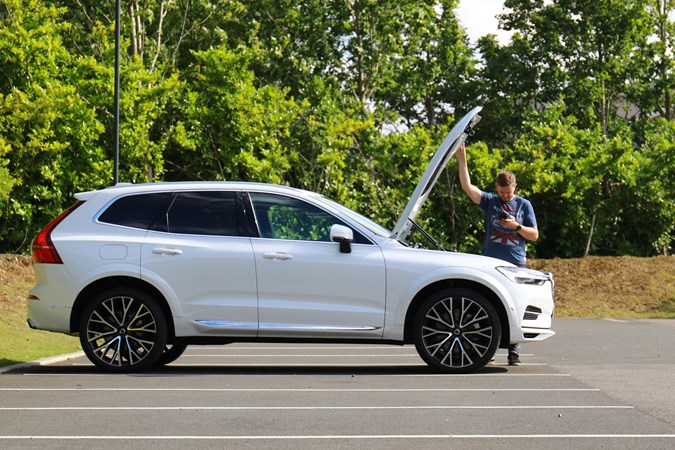
“Hey Google – find an open fuel station near me.” A lack of available petrol forces a change in driving style and results in a tangible improvement in economy without sacrificing driveability or comfort. What’s the catch?
It might seem a bit early in this test to start talking about fuel economy – normally I’d like to have done several months of driving to allow things to settle down for some meaningful numbers to be extracted – but seeing as ‘normal’ has been missing in action for the last 18 months, this update has moved up the agenda a bit.
Much like the XC40 Recharge I previously ran, this car offers 21-25 miles of pure electric range (depending on which mode you put it in, more to follow on this) and switches between petrol and battery power to give you the best economy or performance, in accordance with your right foot.
Up until now I’ve just put my destination in the sat nav, plonked the car in hybrid mode, and then let it do its thing, resulting in an average economy of 32mpg. Yikes.
This is curious because Volvo reckons 100mpg is possible and I do all the right things, like keeping it fully charged, avoiding hard presses of the gas that fire up the petrol engine, and resisting the temptation to sprint away youths in hot hatches at traffic lights. There is the odd long drive up the motorway, but could this skew my figures this much?
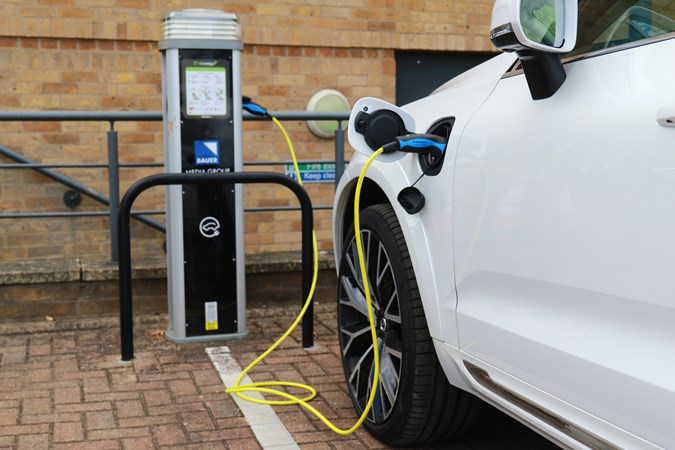
Fuel crisis or opportunity?
Switching things up unexpectedly last month was a sudden lack of fuel in all my local filling stations. This was compounded by an idiotic move the night before supplies dried up, where I’d also looked at the less-than-quarter of a tank I had remaining as I drove past a normally stocked garage and thought: “Nah, can’t be bothered today”.
I’m in the very fortunate position of being able to work from home – in pre-covid times when I was commuting everyday this sip of fuel wouldn’t have lasted very long at all, but now I figured I could just ride it out. My regular school run/food shop/after school activity journeys were all under 25-mile round trips, so I’d likely not need any petrol during the week anyway.
Up until this point I’d not used the “Pure” economy focussed driving mode, which locks the car in EV power. I figured the car knew best and if the journey could be completed without petrol then it would sort all this out. The fuel shortage forced me to experiment with this more efficient mode and it’s improved my fuel economy enormously even now I’m able to fill up again.
While normally the battery range is 21 miles, in Pure mode it jumps to 25 miles – a result of the car doing all sorts of eco tricks like turning down the climate control and lowering the air suspension for a slipperier profile. Happily I don’t find the latter has any effect on the way the XC60 rides, which is generally very good despite rolling on 22-inch wheels.
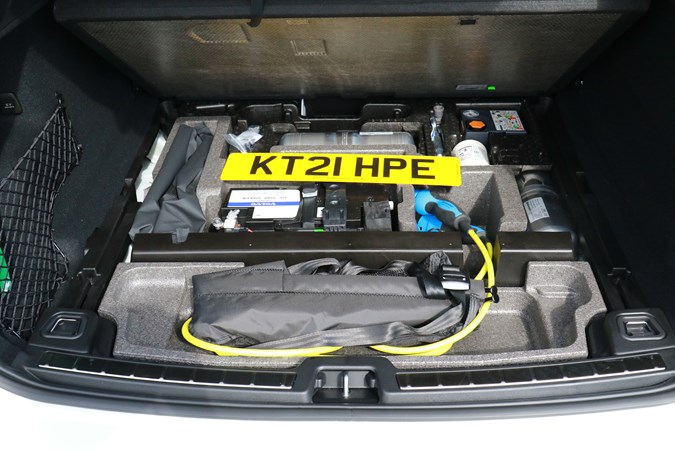
Best economy in the most economic mode…
Why is any of this interesting at all? Well in Pure mode I found the car suddenly capable of completing several journeys in EV mode, where previously in the everyday hybrid setting the petrol engine had kicked in.
My method of putting the address in the sat nav and letting the car work it out was apparently not the most efficient – instead of the mid-30s mpg I had got previously, I was suddenly using no fuel at all. I should say this only works for trips less than 25 miles – any longer and I think it’s better to let the car work it out.
There are downsides to this of course – it is quite a lot slower in Pure mode because you do without the 305hp petrol engine, but I can live with this if it means smooth and quiet emissions free driving. It’s not slow by any means, and more to the point, I’m not likely to be rushing around with my wife and kids in the car anyway, so it makes no odds to me whatsoever.
In fact, I don’t think I’ve ever driven a car with so much power (400hp!) so slowly. With other models offering this sort of performance, you feel like you’re missing out by pottering around, but it seems to be a bit of a PHEV curiosity that you never really want to use it to its full potential. Maybe that’s just me.
The result of all of this? In just over a week my average economy jumped to 37mpg, and that included a trip to the office. Quite a leap when you consider the previous steady 32mpg was calculated over several thousand miles – I’m genuinely fascinated to see how much better it can get.
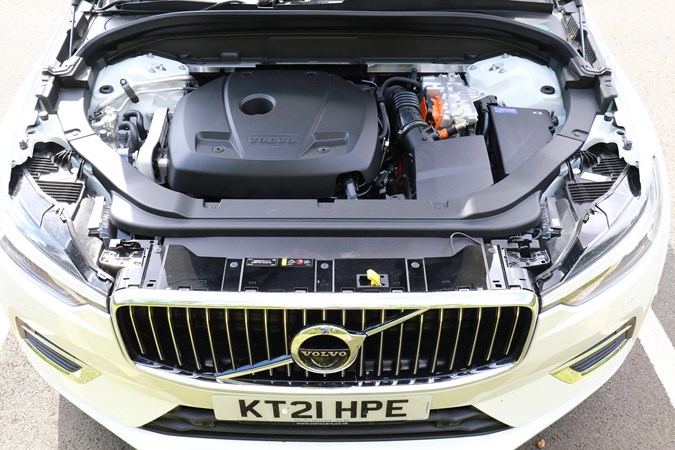
Still struggling with the sat nav
I’ll check back in at a later date to see if things have improved. I’d like to think with a bit of effort I could beat the XC40’s mid-40mpg average, given what I’ve learned this month.
One annoyance remains though – if you put your destination in the sat nav, you will quite often arrive with no electricity for the return leg, because the car assumes you’re going to charge it when you get there. This isn’t always possible though, and with a flat battery the XC60 gets about the same miles per gallon as a V8.
My workaround is to make home my destination and where I’m actually going a waypoint – this works fine but means the sat nav displays directions to the place you want to go and the way home at the same time, and this can make it tricky/almost impossible to read.
Stay tuned for a solution!
Update 3: Interior
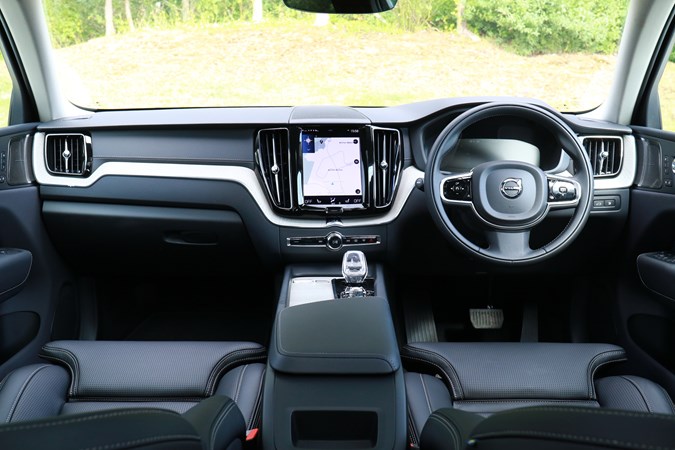
It’s a huge journalistic fail to quote yourself in your own article, so for the sake of professional pride I’d be grateful if you could please pretend this line from my previous long term report about the Volvo XC40 was written by one of my colleagues, and not in fact me. You can even choose which one if you like. I’d recommend Richard.
Anyway, they said: “Better than anyone else Volvo offers a very level field of interior quality across its range of cars. This XC40 is the Swedish maker’s smallest car and yet it doesn’t feel like a nose-dive inside compared to more expensive models.”
The term level field of interior quality is a slightly rose-tinted way of saying the Swedish makers’ cars all look pretty similar on the inside – I maintain that this is a good thing, particularly if you buy one of the cheaper models, because it’ll look and feel very smart indeed.
But what if you’ve got an expensive Volvo? It’s not as appealing to discover your XC60 T8, for example, is no more luxurious inside than a base-spec XC40. After all, you’ve paid more for it.
Well having ‘owned’ that pairing back-to-back I’ve discovered a few subtle tweaks in the larger car that lift it beyond its less costly cousin (but crucially not above the XC90) and on a par with the V60 I ran a few years back.
First most obvious is the strip of driftwood and leather trim runs from door to door – the XC40 had a slimmer dashboard design and therefore less space for nice material, plus the larger car has a cowl of sorts that overhangs from the top. There’s a bit more going on, basically.
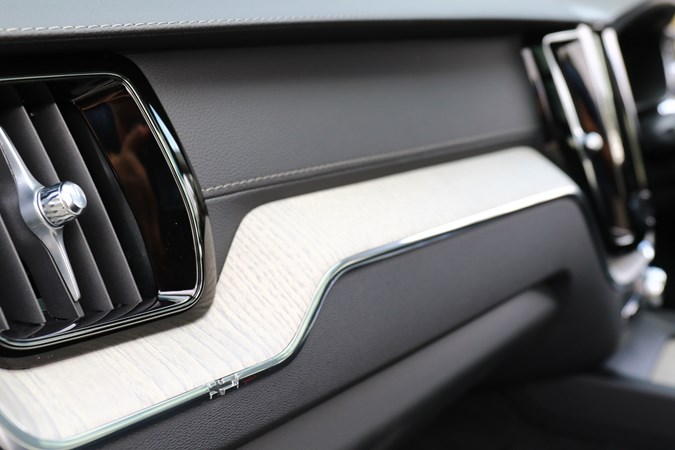
Small improvements across the board
The air vents in the XC60 are a slightly different and more substantial-feeling design, and the buttons on the wheel are made from a shiny glass-effect plastic, which gets a bit fingerprinty but looks nicer. You also lose the XC40’s larger, open storage cubby under the screen, replaced with one covered by a sliding top made of thin strips of wood. It looks great – like a piece of furniture made by a master carpenter, but it doesn’t offer as much capacity.
It also covers the wireless phone charger, so you have to half retract it in order to access this, and for some reason it’s way fussier about where you place your phone. In the XC40 I reckon I could lob my device into the charging slot from the back seat and it’d be fine. In the XC60 it needs to be lined up with millimetric precision like that bit in Apollo 13 where Tom Hanks has to dock the two parts of the spaceship using a glowing reticule. Also my phone covers one of the drinks holders while it’s on charge. This is by no means a big deal, but it’s the one area where actually the larger car is more annoying than the smaller one.
If you’re struggling to care after reading 100 words about the location of a wireless phone charger then I’m sure this next section will generate an opinion, because it seems like everyone wants to offer one the second they get in the car – I’m talking of course about my crystal knob.
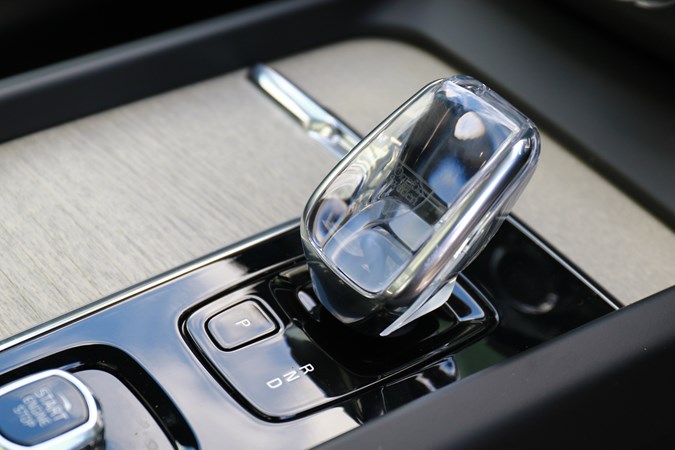
Shifting opinions
I’m very conflicted on this addition to the XC60’s cockpit, I think it looks quite nice compared to the hulking great levers of old and, this is going to sound weird, I like how smooth it feels when you click it into drive or reverse. However, a great many people have told me it looks naff/like a trophy you win at golf/something from the crystal maze, and it’s starting to give me a complex.
This is the odd thing about living with a press car – because you haven’t bought it people seem to be a lot more generous with their negative opinions. I’m starting to take it personally though. It’s not like I’d walk into your house and immediately criticise your child’s artwork on the wall, so please leave my crystal knob alone. I’m particularly bored of hearing how Murray has a bigger and more ornate one in his XC90, but I suppose that’s life.
Anyway, aside from those things the XC60’s improvements over the smaller car add up to it being a substantially nicer environment, while maintaining that sense of familiarity. The 9.0-inch portrait touchscreen and 12.3-inch driver’s display look and operate identically, for example, so if you go from one to the other you won’t need to relearn a new system.
The seats are much better too (I’ll go into this more in the Comfort update) with a proper posture-fixing construction and massage function. Also the dashboard doesn’t squeak like my old long termer, so that’s a huge bonus too.
Volvo’s interior strategy reminds me of walking from the back to the front of a long-haul airliner – all the cabins look broadly similar and you’re on the same plane, but as you get closer to the cockpit the seats get larger and more spacious, and eventually someone will offer you a mimosa. Sadly that last point is where the similarities between my XC60 and business class depart.
Update 4: Practicality
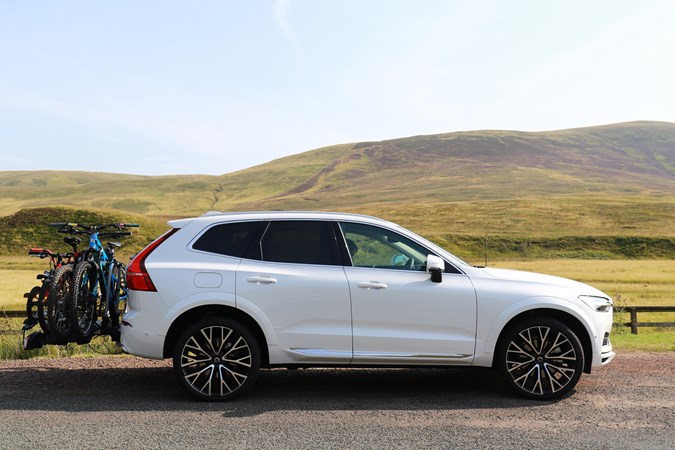
I feel like I should always start these updates with the caveat “I used to have a Skoda Octavia Estate” because its cavernous 600-something-litre boot is always in the back of my mind when assessing a car’s practical credentials. Nothing before or after has measured up (except the other Octavia Estate I had).
But I get it, boot space isn’t the be-all-and-end-all for everyone and I should learn to diversify my assessment of whether a car is a spacial success into other areas. But on first impression I wasn’t exactly blown away by the XC60’s luggage compartment.
Nor was I expecting Octavia levels of space, because this is a high riding, all-wheel drive, air-suspended PHEV – all of those things rob litres from the boot, and such is the case with this car. In fairness it doesn’t give that much away when compared to a non-PHEV XC60 – you get 468/1,396 litres with the seats up or down vs 483/1,410 litres in the normal car.
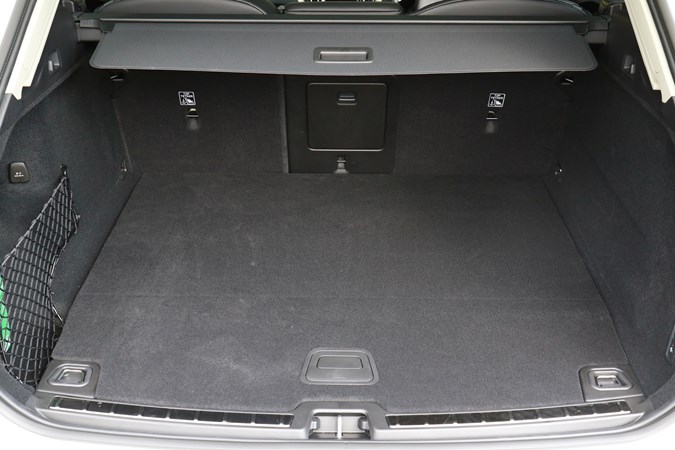
So, while the XC60 trails behind rivals like the BMW X5 and Audi Q5 for outright space, those cars lose more boot space in PHEV form than the Volvo does, so there’s less of a penalty if you choose the plug-in Volvo. But that does little to square away the fact the XC60’s boot is only marginally bigger than the XC40 I ran previously, which offers 452/1,328 litres despite being a much smaller car.
It’s fair to say then that the XC60 uses its larger footprint to improve passenger space, and on this front it’s a huge success – the rear legroom is very impressive, as is the amount of shoulder room, and while I wouldn’t want to spend a long time in the fifth seat, it’s much less of a punitive experience than in the XC40. Even the panoramic glass sunroof doesn’t impinge that much on headroom.
What about provisions for smaller passengers?
I’ve also got the optional built-in booster seats fitted to this car and frankly they’re good enough to warrant buying the entire XC60 just to get. Heaving seats for my kids in and out every time we want to swap from transporting children and adults is a total faff and no matter how many times I’ve done it, still results in my losing fingernails/pints of blood to some sharp or snappy mechanism. The Volvo’s rise up from the seat bases and have two heights for different ages, plus an idiot’s guide with maximum height and weight. Seriously, why can’t all manufacturers offer this?
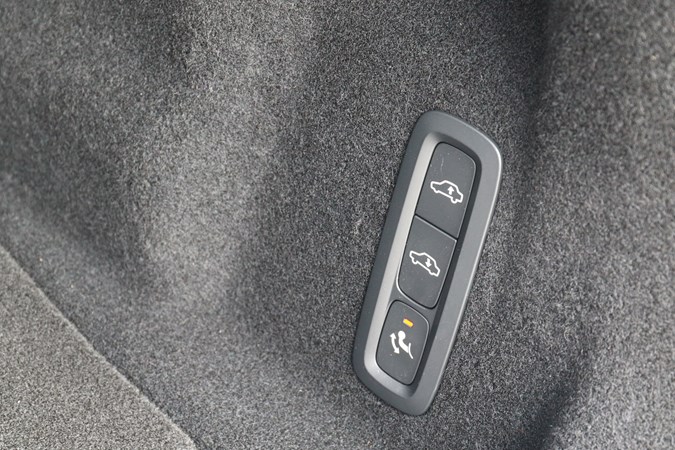
Around the back again, the boot floor is reasonably high (as you’d expect in a tall car) but if you’ve got air suspension like in this model, you can press a button to drop the rear of the car for easier loading. This is great, but the floor itself slopes towards you ever so slightly, meaning things can roll out onto the ground if you use the lowering function.
Lift the floor and there’s a segmented tray holding some air tanks for the suspension and the tyre reinflation kit – you can, if you’re very careful, store the charging lead under here so it doesn’t flap around in the boot, but you have to coil it up in a specific way otherwise the floor won’t go back down again. There’s also a special net under there, which when installed in the back of the car allows you to pack the boot to the rafters, which is handy.
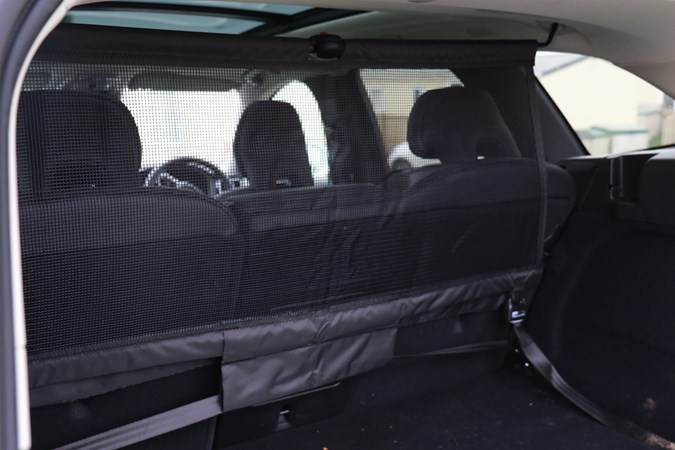
Another button in the boot deploys the towbar (a £1,175 option) but only to halfway, you have to lock it in place or push it back under the car manually. This isn’t unusual but I like to point it out, because my BMW 3 Series Touring was fully automatic (and cheaper), and I now get annoyed by any that aren’t. Onto this I often attach a bike carrier with a 3+1 capacity – it has three permanent rails and then one you can attach for an extra, smaller bike.
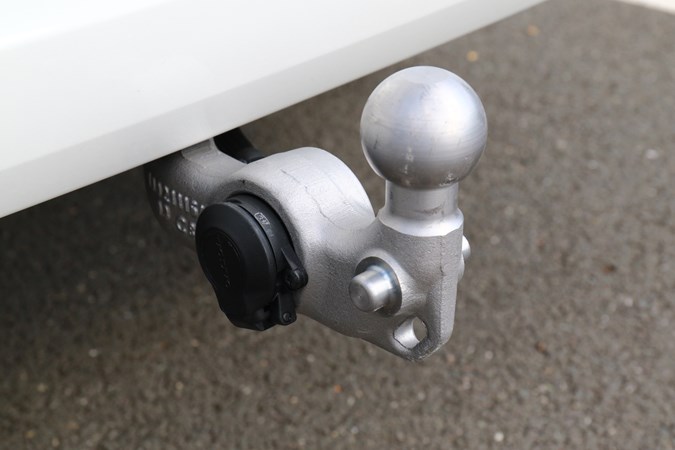
A £500 Thule option from Volvo, it’s not cheap, but it is excellent, holding onto two heavy mountain bikes and two lighter bikes belonging to my kids. It extends what is already quite a long car of course, and also deactivates the rear parking sensors, meaning you lose lane keep assist and Pilot Assist functions on the motorway. Not the end of the world, but not something that would happen if they were on the roof. It does fit very neatly into the boot though – too neatly for this to be a coincidence, I think.

All-in-all the XC60 is a well-packaged machine that makes the most of its footprint with generous interior space and usable, although not class-leading, boot capacity. SUVs from BMW and Audi are better for the latter, but the Volvo feels roomier for passengers and has those genius integrated boosters. So, for once, there’s a usable conclusion for you.
Update 5: A long drive to test comfort, practicality, and my patience
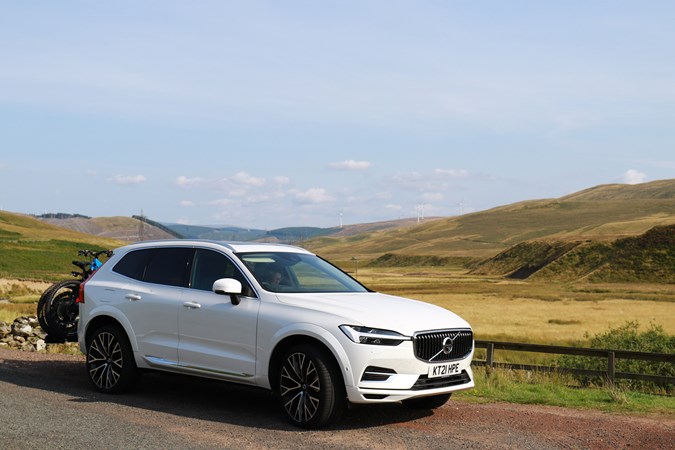
An epic long termer trip has long been a tradition here at Parkers – we’ve driven a Suzuki Ignis from Land’s End to John O’Groats in one hop, taken a VW Transporter van to the Nurburgring, and even toured Iceland in a Mazda MX-5. A big tour to shake down just how comfortable and practical the vehicle is has become part of the programme. But travel has been tricky during COVID-19.
When restrictions eased in 2021 I started making plans for a long haul up north. A decent run past the Scottish border into the closest recreation of Lord of the Rings scenery Europe can offer. A pin was stuck into Ayrshire on our metaphorical map and a suitable itinerary was drawn up.
I’d have liked to have ventured further into the Highlands but 300-odd miles and a likely seven hours of driving (with breaks and allowing for traffic) were realistically all we could expect the kids to tolerate. They’ve inherited my love of cars but also my intolerance of sitting still – there are only so many audiobooks and rounds of I Spy they, and we, can take.
The location meant easy day trips to Arran, Edinburgh and (crucially) the mountain bike trails of the Tweed Valley. I didn’t think I could disappear off for a full uplift day with a clear conscience, but a quick pedal around the red loop at Glentress would be a workable compromise.

This meant taking all four bikes so my family could tour the blue trail, and in turn that involved hooking up the big Thule rack I mentioned in my last update. It’s a fantastic bit of kit – heavy to lift on and off – but very easy to use once it’s on the back of the car and with a handy tilt function so you can still get into the boot.
Unlike a roof-mounted bike carrier there is little to no wind noise with a tow-bar rack, and several miles into the A1 section of the drive this benefit made itself apparent – as an early start, quiet cabin and the gentle rocking of the Volvo’s air suspension lulled the children into a silent doze. It wasn’t to last, of course.
As with all tow-bar accessories a compromise comes in the form of driver assistance – it renders the rear-view camera useless and disables Pilot Assist. You still get adaptive cruise control, but the lane-keep function is no longer available. Not the end of the world as far as I’m concerned, because I don’t tend to use it frequently, but worth noting if you do.
Motorway miles are not PHEV friendly
A long motorway haul while heavily laden, and with several metres of bike ruining the XC60’s aerodynamic wake, meant I wasn’t expecting mega economy. The battery’s fuel-saving benefits are also not as obvious at a steady 70mph cruise and my long-term average started to slip below 40mpg. The car will eke out the electrons over the course of your trip, and in slow traffic on the outskirts of Leeds, it had enough juice to waft us along in silence.
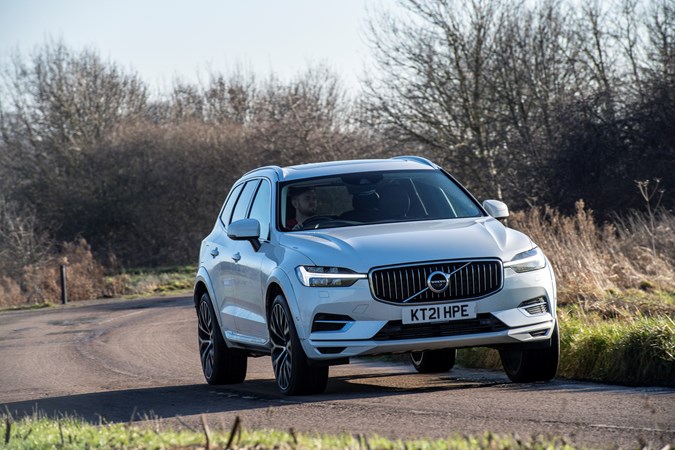
Sadly that silence didn’t extend to the back row where my two kids were pretty bored by this point, and despite the XC60’s massaging seats trying their hardest to de-stress the front row, we were all getting a bit fed up. Lunchtime!
Without a doubt, the handiest feature in this Volvo is its pop-up booster seats in the second row. Previously when I drove my son to nursery every morning, I would have found this even more valuable, because I generally went home in a different car to the one I arrived in and that meant hauling his Isofix all the way to the Parkers desk on the third floor.
Now though they’re still useful, if I want to take adult passengers in the back of the car for example, which previously would have meant uninstalling both booster seats and putting them in the boot. The inbuilt cushions just drop down into the rear bench. The really good thing though is how much easier they are to keep clean.
The parents among you will know too well the horrors of removing a child seat and finding all manner of food detritus lurking beneath – raisins, grated cheese, mashed up biscuit – a cross between a science experiment and a fusion fruit salad. However, with nowhere for crumbs to hide it’s much easier to keep the back seats clean.

After another seemingly endless motorway slog (except for the slightly more scenic A66) we crossed the border, and feeling thoroughly bored by multilane tarmac, I set the satnav to “Avoid Motorways” and diverted us onto some smaller backroads.
The XC60 doesn’t really prioritise performance (you don’t get gearshift paddles behind the wheel, for example) but it’s a capable thing when driven quickly, and ferociously fast even when loaded up with luggage. There’s a bit of body roll but generally, the Volvo stays remarkably composed beyond the limit you’d realistically want to drive with kids in the back seats anyway. So for family life, it’s more than fine, and there’s a bit of extra spice left in the tank for spirited solo drives, too.
At the end of a long trip, though, it’s safe to say I was making the most of the XC60’s ability to waft – albeit quickly – rather than trying to get to the campsite in record-breaking time. It’s the mark of a good luxury car how fresh you feel at the end of a long journey and while stress levels in the cabin could have been lower, that was more to do with the occupants than the vehicle itself.
One huge advantage the XC60 has over a BMW, Audi or Mercedes-Benz rivals is the fact it has Volvo seats. It might be that they just fit me better than other manufacturers, but the Swedish manufacturer makes, for me, the best chairs available.

When you first sit down there’s a firmness that you’d normally assume would translate into rapid discomfort – but just like a racing bike saddle the fact you don’t sink into inches of padding actually helps in the long run. The XC60 supports and promotes a more upright position – it’s really hard to slouch – and even after several hundred miles, I don’t get backache.
As mentioned previously the front two have a massage function and in reality, it’s more of a way to mobilise your back than pummel your muscles sports-massage style, but it works well, especially in combination with the already supportive chairs.
Our time in Scotland consisted of lots of short journeys (ideal with a fully charged battery) and we were well served by the ChargePlace Scotland network. I’d only top the Volvo up if there were plenty of free sockets and moved it immediately when the Volvo app told me it was full, as to avoid clogging up the system for EV drivers.
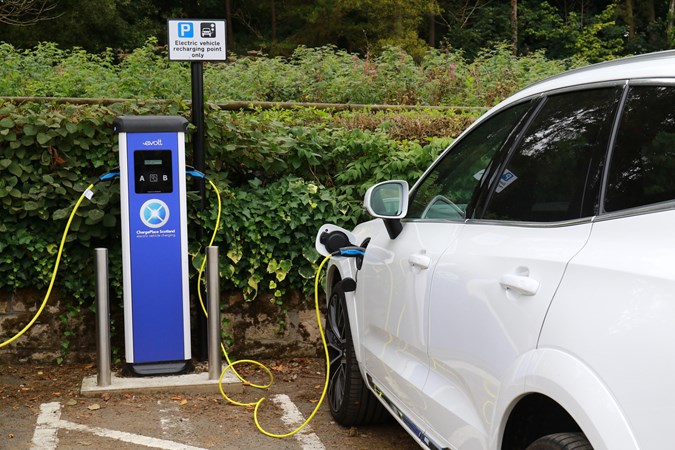
There was also a dedicated three-pin socket for charging cars at the campsite where we stayed, which (after asking permission) I could use to slowly top-up the battery overnight. One time I went to plug in and found the space ICE’d by a conventional car. Normally I wouldn’t have bothered but we had a big trip to Arran the next day and I wanted to go with a full charge.
This meant going into the busy bar and asking for the car to be moved. It was bingo night and heaving in there. I don’t sound remotely Scottish. The man behind the bar made no effort to disguise the fact that I had come in to ask one of the locals to move their car so I could charge up my massive Volvo. Someone shouted, ‘Which part of Scotland are you from?’ and thankfully my response ‘south of Glasgow’ resulted in a few laughs, rather than projectiles. Maybe I should do stand-up.

Arran is stunning, the view unhindered by clouds and a trip bookended by a peaceful boat ride on still, glassy waters. We got around on our bikes, ate ice creams and visited an old castle. My son bought some musical bagpipes that play a tinny rendition of Flower of Scotland from the gift shop, which quickly found themselves ensconced in the glovebox.
Before long we found ourselves packing up the enormous boot to start the journey home. Not a happy moment, I don’t mind saying, because I hate staying in one place for too long and have found the restrictions on travel over the last couple of years particularly hard. A dream holiday for me is a boot full of stuff, a car full of family, and an itinerary full of stops.

The Volvo XC60 was largely faultless, as you’d imagine from a large, luxurious SUV, but the plug-in element does give you an additional thing to think about. For me, a car on a road trip needs to be the bun or the burger. It’s either a supportive. enabling member of the cast, without which the whole enterprise would fall apart, that blends into the background. Or it’s the main focus.
Case in point, the Audi A4 Avant we drove to France a few years back. It just got on with the job of keeping us safe and comfortable without needing a second thought. Total bun. Or the opposite, the Alfa Romeo Giulia Quadrifolglio we drove to Italy – a trip as much about the car as the destination.
In this instance, the XC60 should be all bun, but the ever-present desire to keep it charged to avoid sub-30mpg fuel economy is a bit of an unwanted presence. It doesn’t blend into the background like a waiter at an expensive restaurant, but pulls a seat up at the table and keeps asking if you want more bread. Actually, I quite like the sound of that.

Instead you’re always looking at the battery level, wondering where you’ll get your next fix of juice from. That requires an additional level of planning that an ICE car does not, and a long walk to retrieve the car from the three-pin charger in the morning while everyone else’s vehicles are conveniently located outside their accomodation.
I guess the above issue will become easier with time, and with more prolific charging points. And possibly I’m just being a grumpy old man. It really was a lovely holiday.
Update 6: Verdict – a like-letter to the XC60
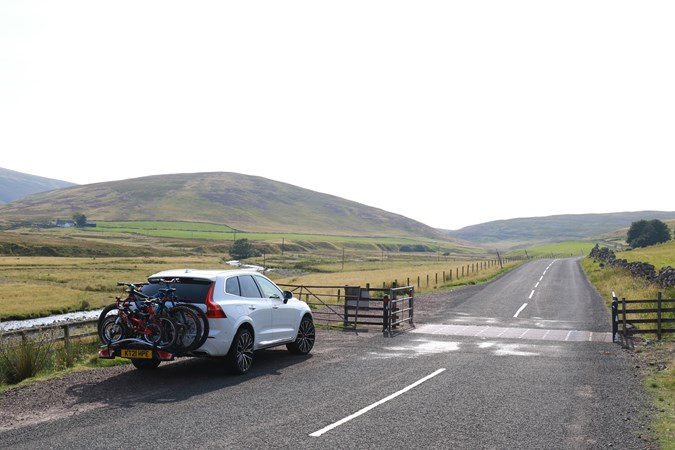
I really, really like the Volvo XC60. But I don’t love it. I’ve been trying to unravel the distinction between those two things for a while now because viewed in isolation that verdict appears to cast aspersions on what is an incredibly well-rounded vehicle.
I don’t think the difference between like and love bears any relation to how good something is – I have very close friends who I like a lot but don’t love, and I’d be extremely upset if they were to suddenly disappear from my life, as the Volvo is about to.
In fact, whether a car is good or bad has little effect on whether you love it or merely like it. I have loved far less competent cars – my old Clio for example, which broke down every three months, that I miss every day. So it’s not a comment on the Volvo’s ability, more the emotional bond I have (or rather haven’t) struck with it.
And that’s where we get into really deep territory because outside of the nerdy circle I belong to, I don’t think many people love their car. Try as I might to disguise it for the purpose of editorial subjectivity, I am a massive car nerd, and while that means I can spend several hours a day worrying about my feelings towards nearly two tonnes of metal, I’m not sure non-car people will care. Because they’re busy thinking about more important things.
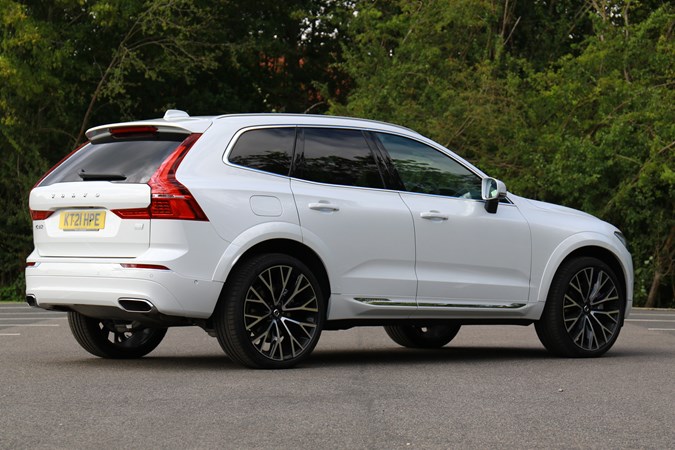
It has been suggested to me that the warm feelings that you find yourself sharing with a car come from the good memories you’ve had with it, and so it’s not entirely fair to compare this largely locked-down Volvo with long termers where I’ve been able to go on long, romantic drives, or transport yet another new (to me) mountain bike purchase, and so on.
But I think it’s more about the clinical way it goes about its business – it’s easy to use with secure handling and fuss-free performance. And much like the way paint goes onto a newly sanded wall, I think the cars you love need to be a bit rough around the edges for your affections to find purchase. The XC60 is a shiny surface, in both senses.
Wafting around in EV mode was brilliant while the battery lasted, which meant I rarely wanted to awaken the petrol engine and make the most of the Volvo’s substantial power. Much like the XC40 I ran previously, I ended up feeling like I’d rather have a fully electric XC60 than a PHEV. The pop-up booster seats I’ve mentioned several times before would have sold this car to me alone. There were plenty of things about it to love.
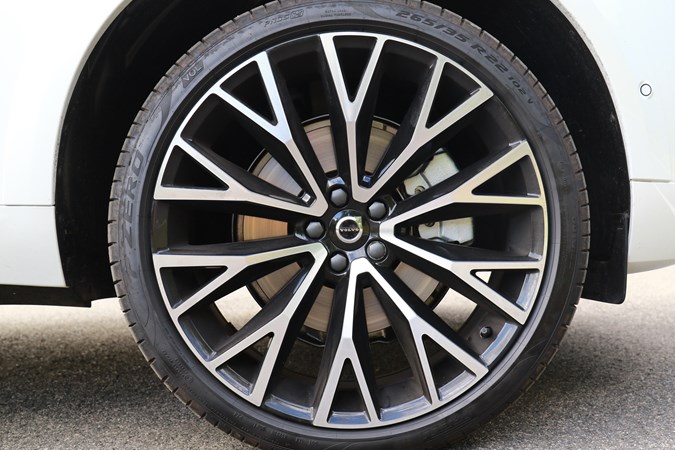
It’s been described as dentist spec around the office a few times and I’m not sure whether that’s because it’s a big luxury SUV, the kind a successful orthodontist would drive, or because it’s whiter and shinier than a Californian’s smile. It’s certainly not to do with the stiffness of the ride – people spot the 22-inch wheels and assume they’ll knock your fillings out, but the air suspension is surprisingly plush.
In a lot of ways, the Volvo is like a dentist. I don’t need to like (or indeed love) the person in charge of looking after my teeth, I just want to know they’re concentrating on the task and hand at completing it with a high degree of competency. I can admire their ability without wanting to go on a spa break with them. That’s the XC60 to a tee – I don’t love it, but I don’t need to. It’s an absolutely fabulous family car.



